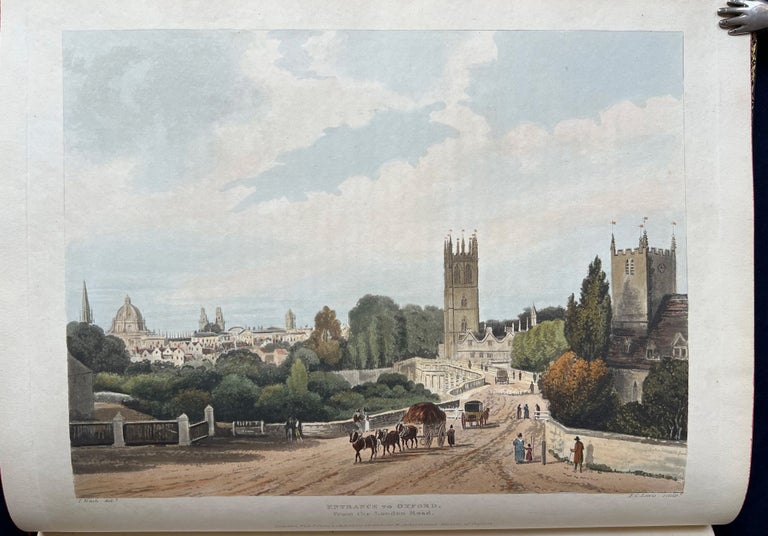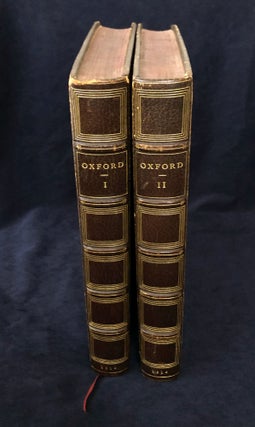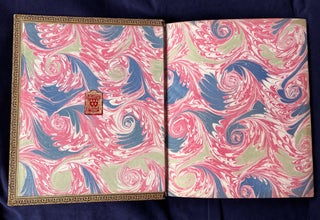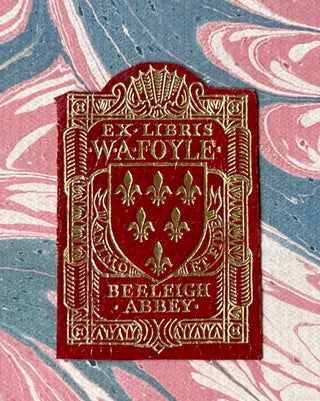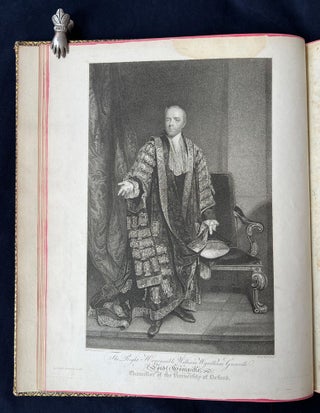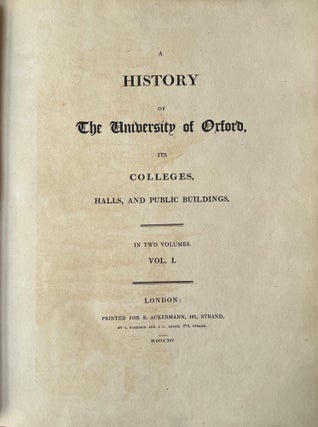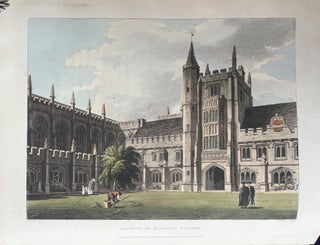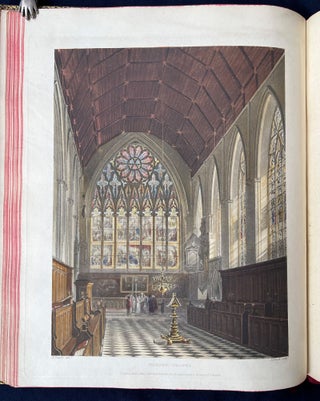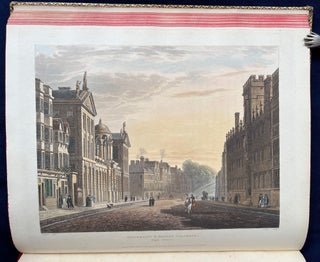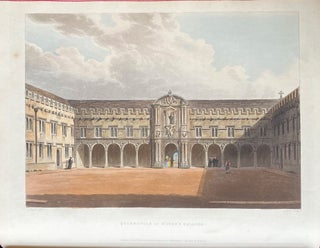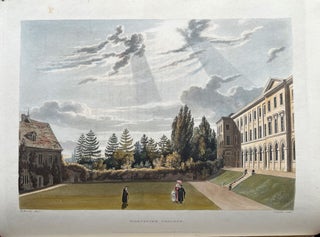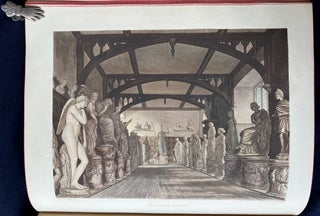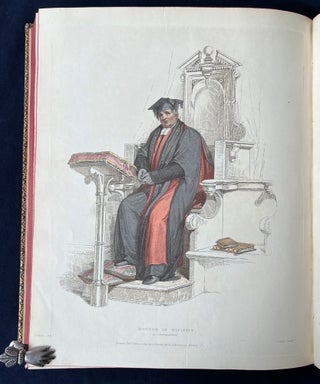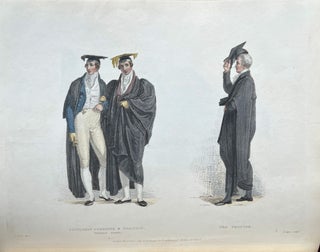A History of the University of Oxford, its Colleges, Halls, and Public Buildings
London: R. Ackermann, printed by L. Harrison & J. C. Leigh, 1814. Bluck, Stadler, Hill & others after Pugin, Mackenzie, Westall & others. First Edition. In two volumes; 4to, 13 x 10.5/8 in. (330 x 270 mm). vol. 1: xxvi+275+vi; vol. 2: iv+262+vi. Half-titles, list of subscribers, uncolored stipple-engraved portrait of Lord Grenville to whom the volume is dedicated, and 81 hand-colored plates comprising 64 aquatint views by Bluck, Stadler, Hill & others after Pugin, Mackenzie, Westall & others and 17 stipple-engraved plates of academic costumes by Agar after Unwins, without the 33 portraits of founders as often, plate 50 in first state but plates 1, 15, 39, 74, 78, 84 & 94 all in second state, plates bright and clean but usual offsetting, portrait in vol.1 with light water-staining to upper margin, stain to a few upper inner margins of a few plates and leaves of vol.2. Watermark on text and plates J. Whatman 1812. Later brown morocco, gilt fillets, 5 raised bands, spines ruled in gilt, inner gilt dentelles, marbled end paper, all edges red, slightly rubbed at joints and edges, one or two minor scratches.
FOYLE COPY copy with gilt-stamped red roan Beeleigh Abbey label to front pastedown of vol.2 (removed in vol.1).
[Abbey, Scenery 278; Tooley 5; Bobins 609]
British Library UIN BLL01002740161.
Originally published in 20 monthly parts, this is an early issue with the plates watermarked 1812. Ackermann's reputation as the publisher of colorplate books of the highest quality was established with the publication of "The Microcosm of London" (1808-1810)— our inventory no. 419. This collection of views of Oxford is just as beautiful and also features full-length portraits of academic costumes, ranging from Doctor of Divinity, to Commoner, to Servitor. The text is ascribed to both William Combe (1742-1823), & Frederic Schoberl (1775-1853).
RUDOLPH ACKERMANN (1764 – 1834) was an German-born bookseller, inventor, lithographer, publisher and businessman. He moved to Paris at a young age and settled in London at 23. In 1795 he established a print-shop and drawing-school on the Strand, very close to the Royal Academy of Arts and his business quickly expanded and flourished. As a publisher Ackermann was both creative and efficient, bringing to the commercial production of color plate books innovative techniques and an uncompromising attention to detail which ensured uniform high quality (ODNB). He was also an innovator in carriage design and was an early adopter and promoter of gas lighting.
WILLIAM A. FOYLE (1885 – 1963) was one of the leading London booksellers of the 20th century. He opened his first bookshop with his brother Gilbert in 1903 and by the late 1920s their bookstore in Charing Cross Road held a stock of four million volumes on over thirty miles of bookshelves. His vision for the business was a bookshop for the world - for every one from any station in life - "The People's Bookshop", and it became a meeting place for famous writers and distinguished figures, along with members of the public. In the early 1940s Foyle bought Beeleigh Abbey, a 12th-century monastery in Essex and formed one of the largest English private libraries of the 20th century. The library was sold at auction by Christie's in July 2000. The three-day sale realized some £12,000,000, making it the single most valuable collection of books ever to be sold at auction in Britain or Europe.
Condition: Near fine.
Item number: 418
Price: $5,800.00
Share:
